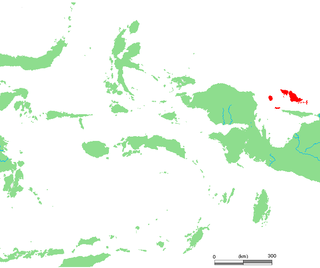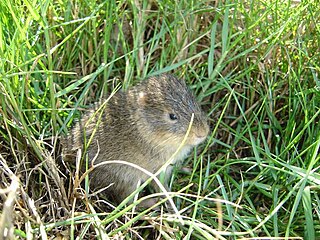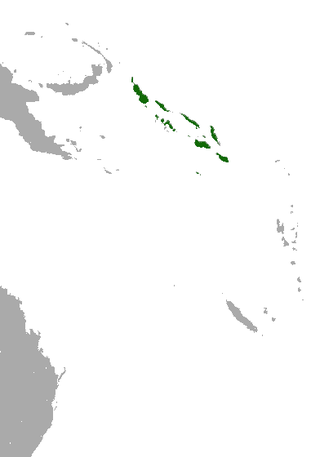
The Schouten Islands are an island group of Papua province, eastern Indonesia in the Cenderawasih Bay 50 km off the north-western coast of the island of New Guinea. The group consists of the main islands of Biak, Supiori and Numfor, and numerous smaller islands, mostly covered in rain forest. The population of the archipelago is about 130,000.

The Philippine naked-backed fruit bat or Philippine bare-backed fruit bat is a megabat that mostly lives on Negros Island. Two small populations were also found on Cebu Island in the Philippines. Like other bare-backed fruit bats, its wings meet along the midline of their bodies, making it a very agile flier. It roosted in caves, in areas where little light penetrated the gloom. It was so abundant once that it left piles of guano, which were used by miners as fertilizer.

Santa Catarina's guinea pig or Moleques do Sul cavy is a rare guinea pig species of southeastern South America.

The greater guinea pig is a species of rodent found in the coastal strip of Brazil and Uruguay, where it lives in moist grassland and marshes.

The bare-backed fruit bat or Moluccan naked-backed fruit bat is a fruit bat in the family Pteropodidae.

Beaufort's naked-backed fruit bat is a species of megabat in the family Pteropodidae. It roosts in caves.

Dobsonia is a genus of megabat in the family Pteropodidae. It contains the following 13 species:

The Biak naked-backed fruit bat is a species of megabat in the family Pteropodidae. It is endemic to Indonesia.

The Sulawesi naked-backed fruit bat is a species of megabat in the family Pteropodidae. It is endemic to Indonesia.

The Solomon's naked-backed fruit bat is a species of megabat in the family Pteropodidae. It is endemic to the Solomon Islands.

The lesser naked-backed fruit bat is a species of megabat in the family Pteropodidae. It is found in Indonesia and Papua New Guinea.

The Panniet naked-backed fruit bat, also known as the De Vis's Bare-backed Fruit Bat and Panaeati Bare-backed Fruit Bat, is a species of megabat in the family Pteropodidae. It roosts in groups, within caves and tree hollows.

The western naked-backed fruit bat is a species of megabat in the family Pteropodidae. It is endemic to Indonesia. Its natural habitat is subtropical or tropical dry forests.

The New Britain naked-backed fruit bat is a species of megabat in the family Pteropodidae. It is endemic to New Britain island in northern Papua New Guinea.

The greenish naked-backed fruit bat is a species of megabat in the family Pteropodidae. It is endemic to some of the northeastern Lesser Sunda Islands in Indonesia, being found on the Kai Islands, the Banda Islands, and the central and southern Molucca Islands, including Seram Island, Ambon Island, and Buru Island.

Andersen's naked-backed fruit bat or Andersen's bare-backed fruit bat is a large cave-dwelling species of megabat in the family Pteropodidae. It is endemic to the Bismarck Archipelago including the Admiralty Islands in Papua New Guinea.

The Halmahera naked-backed fruit bat is a common and widespread species of megabat in the family Pteropodidae. It is endemic to Indonesia. The bat's non-Moluccan populations are apparently an undescribed separate sub-species.

















